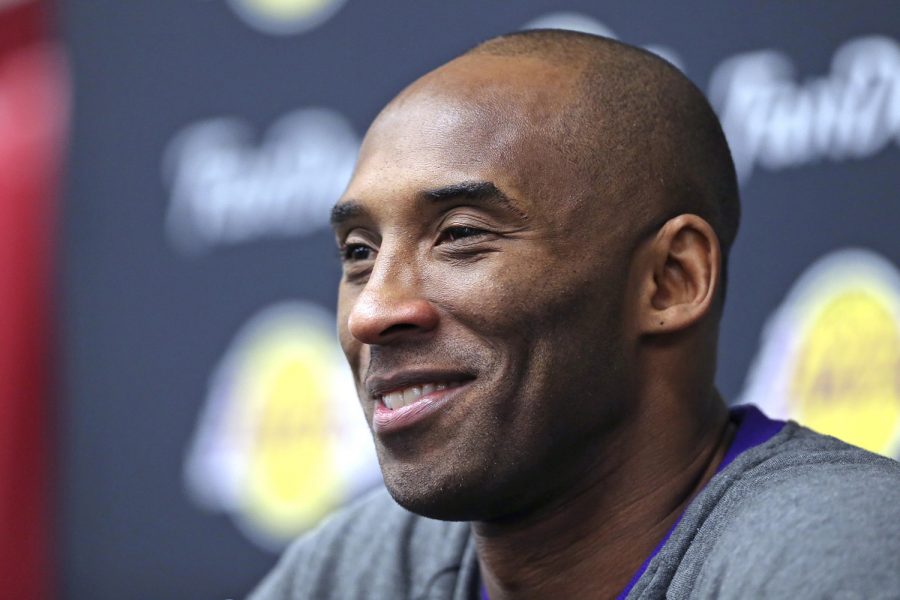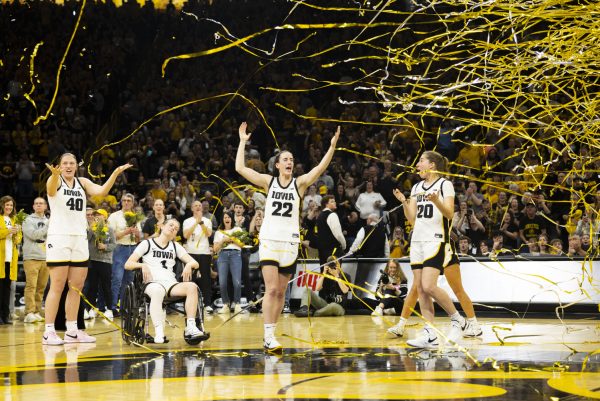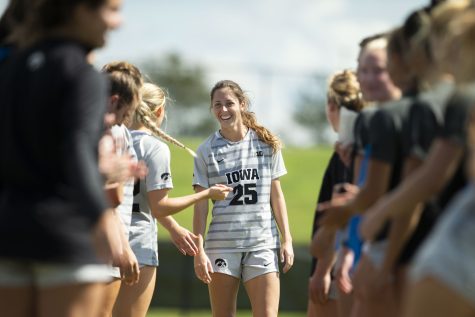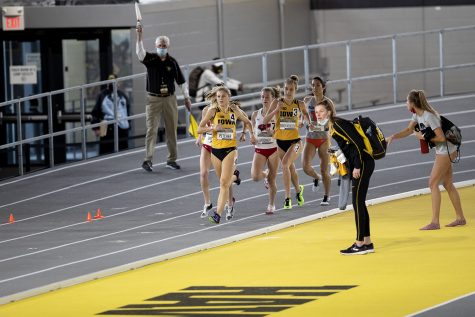Read: Coverage of Kobe Bryant’s death showed the best and worst of sports media
False reports in regard to the accident that killed Kobe Bryant overshadowed the journalists who carried the public through the tragedy.
Los Angeles Lakers forward Kobe Bryant, speaks with members of the media, before his team's game against the Chicago Bulls, at the United Center, in Chicago, on Feb. 21, 2016.
January 27, 2020
Former NBA superstar Kobe Bryant and his 13-year-old daughter Gianna were among nine people that died on Sunday as a result of a helicopter crash in the hills over Calabasas, California.
The basketball world — from current and former players to fans whose only close relationship with Bryant was yelling “Kobe” when throwing a piece of crumpled up paper at the recycling bin — was immediately struck with grief.
An icon in popular culture had died at 41.
With Bryant’s death came a swarm of media outlets determined to put out content on Bryant as quickly as possible. More than once, this came at the expense of crucial details in relation to the accident.
TMZ initially reported that Bryant died in a helicopter crash around 1:30 p.m. Sunday. A post with a link to the story appeared on Twitter minutes later.
Then there was chaos.
By no means is TMZ a traditional, reliable source. The outlet does have a history at reporting the deaths of prominent popular culture figures. TMZ was the first to break the news about Michael Jackson’s death in 2009. It did the same with Whitney Houston in 2012 and with Prince in 2016.
So several media outlets ran with the report.
Some stations did so — and provided their own speculation — without the facts.
Matt Gutman, a reporter for ABC News, rushed to do a package on the story and repeated a rumor live on the air that Bryant had died in the crash along with all four of his daughters.
“The fact that his four of his children are believed to be on that helicopter with him, all daughters, one of them a newborn, is simply devastating,” Gutman said during the broadcast. “Hoping that this is not the case, but, you know, from the police reports right now, it appears that Kobe Bryant is down in the helicopter.”
That baseless rumor then spread around to different ABC affiliates and took off on social media.
Lindsey Mastis, an anchor for ABC in Washington, D.C., soon backtracked on Gutman’s claim and tweeted out a report that Bryant was survived by his wife and all four of their children.
“Our ABC affiliate in Los Angeles is reporting that Kobe Bryant is survived by his wife and four children,” Mastis’ tweet said. “So it does not appear they were on board the helicopter.”
These claims turned what should have been a period of mourning for Bryant and the eight others who tragically lost their lives into a hunt to find the most updated and accurate version of events.
Other minor speculative claims and broadcast errors continued to pop up in relation to the accident.
Several sources reported that the NBA would be cancelling games on Sunday to grieve Bryant’s death until the league officially announced that the games would go on as scheduled.
A BBC news report of Bryant’s death featured footage of LeBron James instead of Bryant while audio described Bryant’s accomplishments.
Storylines like this overshadowed some of the outstanding journalism displayed in the midst of the disaster.
After the TMZ story, the LA Times provided a transparent report that said the publication did not have all the facts, but would update the story as it continued to unfold. The Times also offered content related to its coverage of the accident without paywalls.
ESPN’s Senior NBA Insider Adrian Wojnarowski provided accurate and reliable reports to help guide everyone through the accident. Michael Eaves provided four hours of uninterrupted coverage on Bryant for the same network. Eaves was holding back emotions for the duration of the broadcast, as Bryant was someone he had crossed paths with numerous times over their careers.
This is a field where the bad reporting often stands out more easily than the good. That’s just the nature of the job.
When reckless, inaccurate, and — to a certain degree — offensive reporting like what was seen during this tragedy comes out, it’s a reminder that members of the media are held to a higher standard than that.
For good reason.















